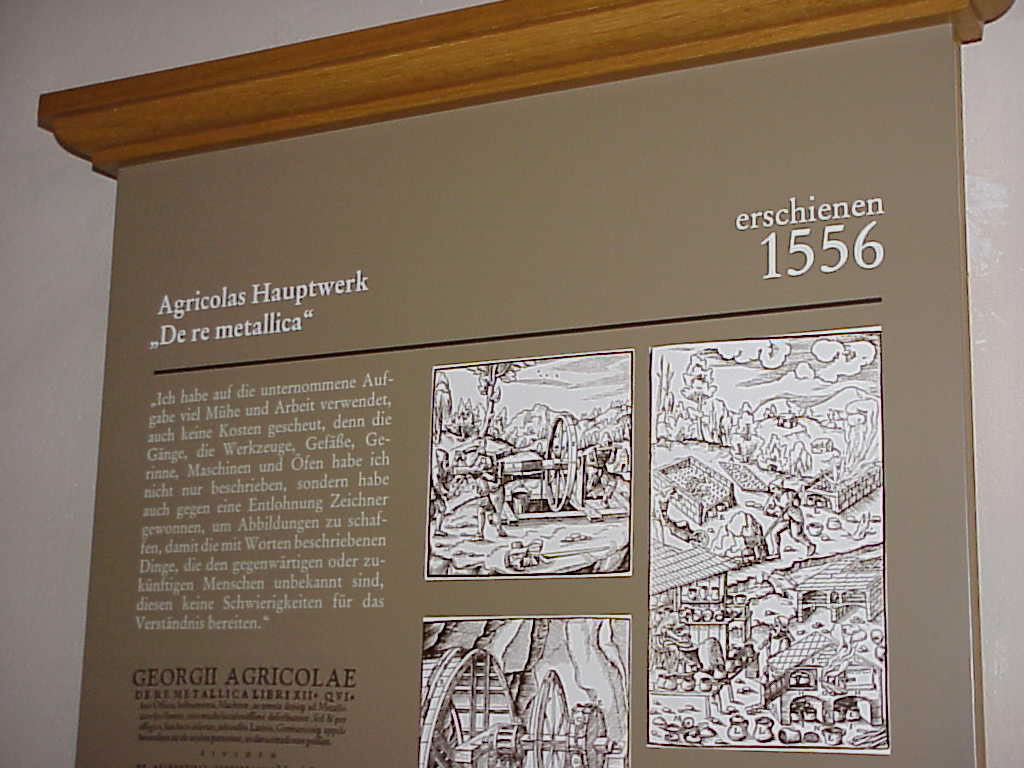Glauchau, Germany/glauchau410
Previous | Home | NextPanel devoted to Agricola's most important work, De Re Metallica, which appeared posthumously in 1556, the year after his death. The book is an astoundingly modern contribution to the technology and science of mining. Graced with over 350 woodcuts, it details the methods of mining: finding the proper sites; the construction of the mines; smelting; and assaying. The book is written in excellent Latin; Agricola knew the classic literature well and referred to it often. When there did not exist a term he needed, he coined one, and he recognized new mineral species and named them. Agricola abandoned the Medieval divining rod and replaced it with observation and logic. With a perceptive eye he proposed that the formation of veins ("canales") in beds of rock was caused by the deposition of flowing water — a prophetic interpretation that anticipated the modern view of sedimentary and hydrothermal deposition. Agricola's education was founded on ancient scholasticism and yet was not bound by it; he exemplified the brave approach taken by the first scientists who broke out of old thinking molds. Indeed, he appeared to be the first to use the term "chemistry" (chymia) instead of "alchemy" (alchymia). Agricola's De Re Metallica was used as the principal guide for miners and metallurgists for almost 200 years.
